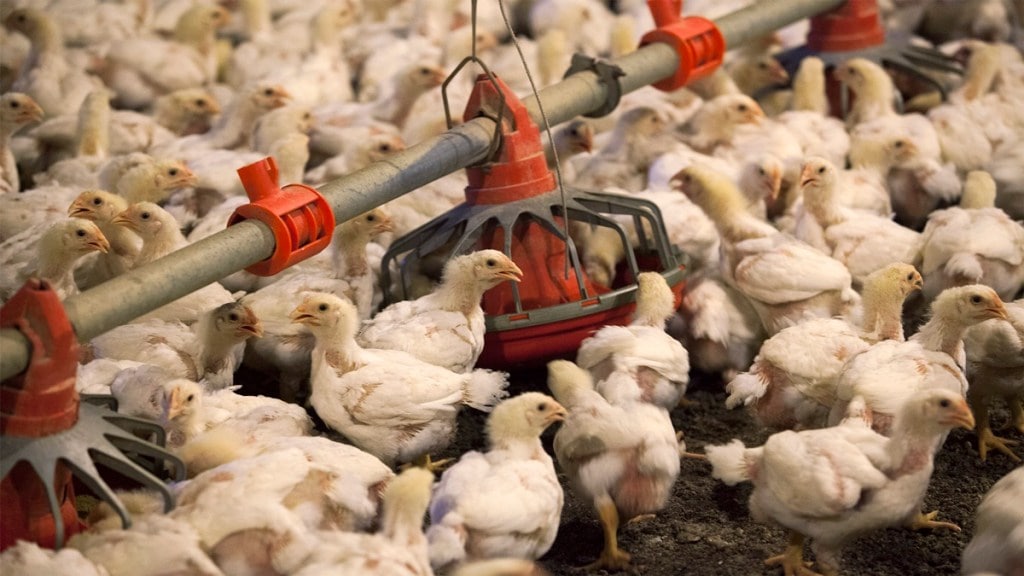Bird Flu Outbreak in India: As the United States continues to grapple with bird flu, multiple outbreak have been reported in the poultry farms in several states across India.
In Maharashtra, 7,200 poultry birds have been culled and 2,230 eggs destroyed in the 7 epicentres of areas affected by bird flu (Avian Influenza), since January 1, Indian Express reported.
According to the report, most of the outbreaks have been reported in unorganised and backyard poultry farms with the organised sector being spared of the outbreak. The Indian Express report also revealed that the latest outbreak of bird flu was reported from the village of Mangli in Brahmapuri taluka of Chandrapur district.
As per officials of the state Animal Husbandry Department, 2,065 birds were killed in villages under a 5 km distance from the area where the first incident was reported. As per operational protocol, all birds, eggs, and animal feed has to be destroyed within 5 km radius of the area where the first incident has been reported. In the Chandrapur case, 1,165 eggs and 50 kg of feed was destroyed.
Reportedly, the Animal Husbandry officials have distributed Rs 2,91,963 as compensation to poultry farmers after their birds, eggs and feed were destroyed.
What is the status of bird flu in Maharashtra?
Maharashtra reported seven epicentres of bird flu incidents from the districts of Latur, Nanded, Nagpur,Thane, Raigad and Chandrapur till February 6. Other than poultry, bird flu has been reported in tigers, leopards, vultures and crows. According to the Indian Express report, mortality reported due to the flu till date is 693 which includes three tigers and one leopard. The big cats were housed in the Gorewada Rescue Center in Nagpur. Three white backed vultures have died of bird flu at the centre.
In Udgir taluka of Latur district, 71 crows died that had later tested positive for the disease. In all the seven epicentres the H1N5 strain of the virus was said to be the cause of the mortality in the animals and birds, Indian Express reported. Being zoonotic in nature, strict vigilance is kept when such cases are reported. The outbreak in Indian animals and birds is caused when they come in contact with migratory birds. Most cases have been reported from areas near water bodies which were frequented by migratory birds.
Which states of India are affected by bird flu?
Other than Maharashtra, Andhra Pradesh has also has reported sudden deaths of chickens and health officials have identified the cause as the H5N1 virus in the Godavari district. Many chickens have reportedly died in parts of Andhra Pradesh and Telangana due to the virus. A significant number of chickens have died in Khammam and Sathupalli, as well as in both Godavari districts. Eluru District is also currently facing a bird flu outbreak, with approximately one lakh chickens dying at a poultry farm in Badampudi, Unguturu.
A toll-free number and a command control center have been set up for reporting poultry deaths, and 20 Rapid Response Teams have been deployed to address the situation.
The Collector has advised residents within a 10-kilometer radius of the affected poultry farm to remain cautious. Officials have been instructed to take swift action and educate the public on necessary precautions to prevent the spread of bird flu.
Additionally, the Collector has warned against the circulation of false claims regarding bird flu being detected in humans in Eluru. She urged people to avoid spreading panic through misinformation and emphasized that only verified information should be shared, PTI reported.
A recent case in Chhindwara, Madhya Pradesh, has once again brought to light the risks of bird flu, as authorities confirmed infections in two shops and a household, affecting chickens and a cat, news agency PTI reported. The state Animal Husbandry Department had sent samples of the dead chickens to Bhopal for diagnosis, which confirmed avian influenza as the cause of deaths.
According to experts, the virus is spread by migratory birds that visit the Kolleru region every year from various countries during the winter season. Experts say the virus reached the reservoirs when the birds defecated in the water. It is estimated that the chickens became infected through the water, PTI reported. According to multiple media reports, no human case has been reported so far.
What is bird flu?
Avian influenza, commonly called “bird flu,” is a viral infection that spreads in birds, cows and other animals. According to the Centers for Disease Control and Prevention (CDC), H5 bird flu is widespread in wild birds worldwide and is causing outbreaks in poultry and U.S. dairy cows with several recent human cases in U.S. dairy and poultry workers.
While the current public health risk is low, CDC is watching the situation carefully and working with states to monitor people with animal exposures, the US federal body stated.
According to the Cleveland Clinic, sometimes, humans can get bird flu from infected animals.
What are the symptoms of bird flu?
Symptoms of bird flu include:
- Pink eye (conjunctivitis)
- Fever
- Fatigue
- Cough
- Muscle aches
- Sore throat
- Nausea and vomiting
- Diarrhea
- Stuffy or runny nose
- Shortness of breath (dyspnea)
- These symptoms can be mild or severe. Most recent cases of bird flu in the U.S. have caused pink eye and mild respiratory symptoms.
How to protect yourself from bird flu?
Here are some ways to reduce your risk of bird flu include:
- Wear protective clothing when working with birds, wild animals and livestock
- Wash your hands frequently when handling birds, wild animals and livestock or after being in areas where they live.
- Don’t work with animals who are sick or who’ve been exposed to avian influenza.
- Take your shoes off before entering your home if you’ve been in areas where birds like waterfowl or chickens live. Don’t touch or drink unpasteurized milk.
- Get a seasonal flu shot.

